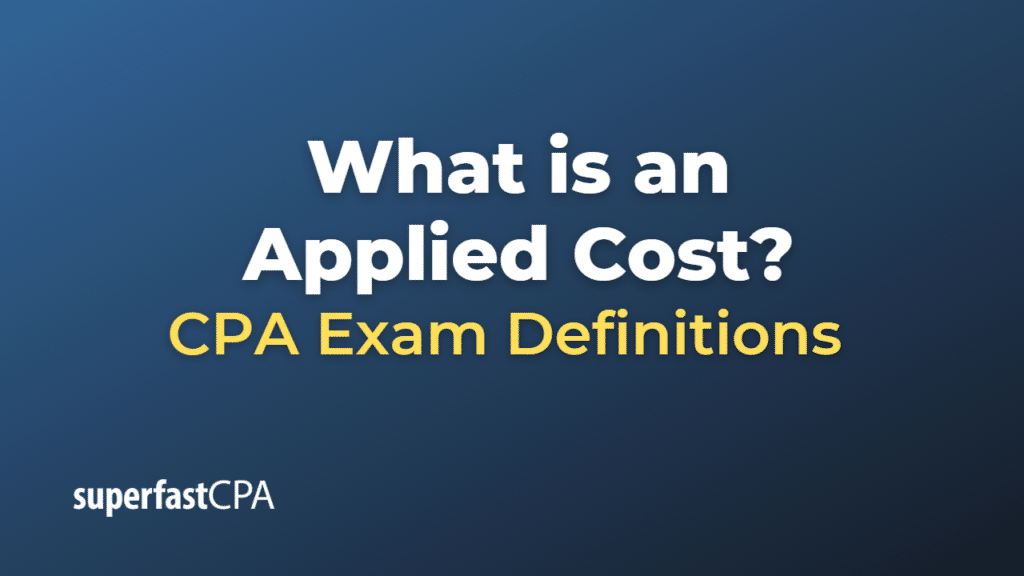Applied Cost
An applied cost, also known as an allocated cost or applied overhead, is an indirect cost that is assigned to a product, service, or department within an organization. Applied costs are not directly traceable to a specific product or service but are necessary for the overall functioning of the business. These costs are usually distributed based on a predetermined allocation rate or a specific cost driver.
Examples of applied costs include:
- Factory rent: Rent for the factory building is an indirect cost, as it is not directly tied to any single product. However, it is necessary for manufacturing activities. The rent can be allocated to different products or departments based on square footage or production volume.
- Utilities: The cost of electricity, water, and other utilities used in a production facility is not directly traceable to individual products. These costs can be allocated based on usage, production hours, or other relevant factors.
- Depreciation of machinery and equipment: The depreciation expense of machinery and equipment used in the production process is an indirect cost that can be allocated to various products or departments based on usage or other relevant factors.
- Salaries of support staff: Salaries of employees who are not directly involved in the production process, such as administrative staff or maintenance personnel, are considered applied costs. These costs can be allocated based on the number of employees in each department, total departmental expenses, or other factors.
Applied costs help businesses to better understand the full cost of producing a product or service, allowing for more informed decision-making, accurate pricing strategies, and improved cost management.
Example of an Applied Cost
Let’s use the example of a furniture manufacturing company that produces chairs and tables.
Suppose the company incurs a total utility cost of $10,000 per month for its production facility. These utilities costs are an indirect cost, as they are not directly tied to the production of chairs or tables. To allocate the utilities cost between the two products, the company decides to use machine hours as the cost driver.
During the month, the company uses 2,000 machine hours to produce chairs and 3,000 machine hours to produce tables. The total machine hours for the month are 5,000.
To allocate the utilities cost, the company calculates the allocation rate per machine hour as follows:
Allocation rate = Total utilities cost / Total machine hours = $10,000 / 5,000 hours = $2 per machine hour
Now, the company can apply the utilities cost to each product based on the number of machine hours used:
- Chairs: 2,000 hours x $2 per hour = $4,000
- Tables: 3,000 hours x $2 per hour = $6,000
By using the applied cost method, the company has allocated the $10,000 utilities cost between chairs and tables based on their respective machine hours, which helps to better understand the cost structure of each product and make more informed business decisions.













